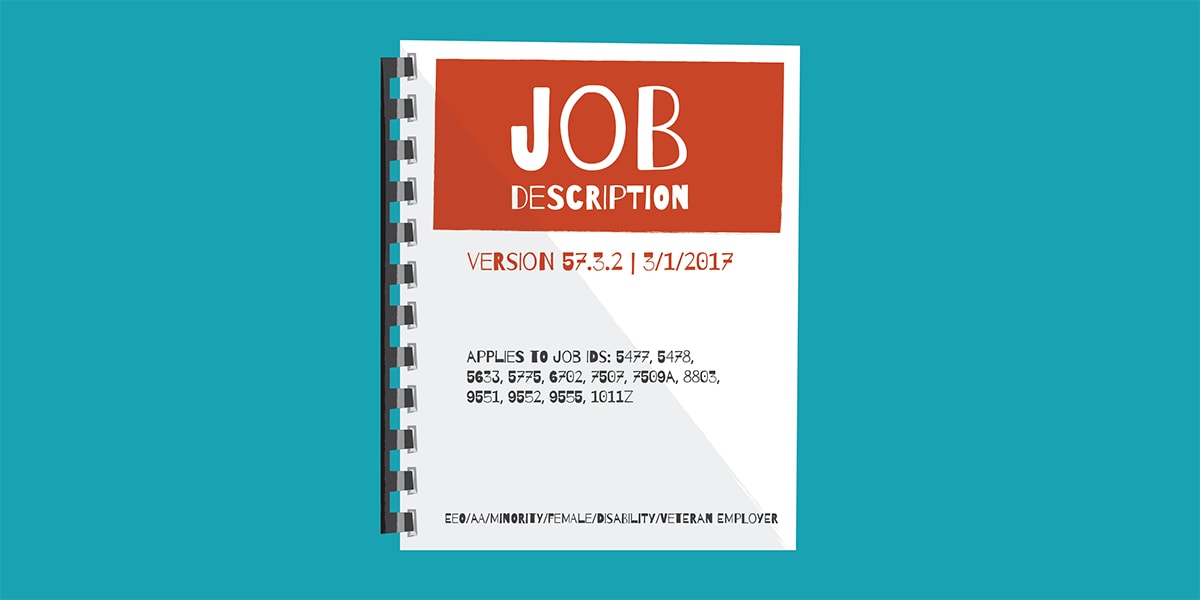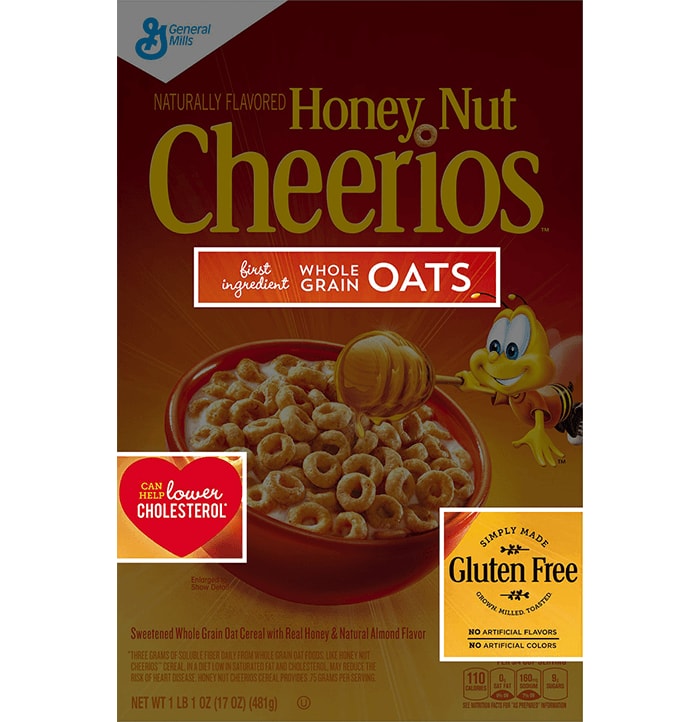
Advertising jobs is hard work (something we know a thing or two about since we’re an ad agency that specializes in recruiting). But companies often make it even harder by falling into easily preventable mistakes—slipups they’d catch and avoid in product advertising, but slip into when it comes to job advertising.
Here are four common mistakes we see—none as bad as the sandwich board approach shown above, but missteps nonetheless.
Mistake 1: Overstating the Pay

Businesses rarely overstate their actual compensation, but often exaggerate its importance. They assume (even if unconsciously) a 1:1 relationship between better pay and better recruiting success. Mo’ money means mo’ hires...or does it?
While there’s no question that higher pay helps, thinking it will automatically sell a job is like thinking lower prices will automatically sell a product. It’s the classic marketing mistake of focusing only on dollars instead of what someone gets in exchange for them.
Truth is, we don’t want the highest pay or lowest price. We want the best value—the most attractive figure for the particular features or benefits we’re seeking. If a job or product lacks those, then thanks, but no thanks. We’re not interested.
So when it comes to advertising jobs, emphasize quality of work more than quantity of money (while remembering that the money is one factor of quality).
- Describe the importance of the job—organizationally and personally—and what sorts of opportunities come with it now and later.
- If the job does pay above average, help people understand what puts you in a position to offer higher compensation and what sorts of responsibilities and expectations come with it. If a heavy check comes with a heavy workload, be honest about it.
- Touch on the untouchable stuff—intangible, but real benefits, whether it’s company stability, principled leadership, work-life balance, or whatever gives you an edge.
Bottom line, don’t focus on the bottom line. Focus on value.
Mistake 2: Understating the Pay

While some companies go on and on about pay, others don’t say a word. In product advertising, this is like the company that’s hush-hush about prices. You know the scenario. You’re cruising a website and grooving on a product. “Space camp for my dog? Shut up and take my money!” But when you try to give it to them, they actually do shut up except to say, “Call for pricing.”
In other words, they’ll tell you everything except the one thing you need to calculate the value of the offer. Ironically, saying nothing about the price suggests, “It’s high–so high that you’d better call NASA to crunch the numbers.” Even if that’s not true, it’s the message that silence about price communicates.
Similarly, silence about job compensation can send all the wrong messages, like:
- Our pay’s so low that we’ll just avoid the subject.
- Or we’re hoping to lowball you.
- Or we’re so vulnerable to competitors that we can’t risk tipping them off about our pay.
Add your own messages to that list, but here’s the main point: don’t let silence speak for you. Discuss pay in every job description. It’s best to give real numbers–a bracket or range. Even if the pay is “negotiable based on experience,” it’s only negotiable within limits, so give an idea of what those limits are. You’ll ultimately have to do that anyway, and if you do it up front, you’ll immediately eliminate candidates who don’t fit your compensation scale.
Be sure to also give an idea of total compensation—not just pay, but bonuses, benefits, and other advantages that add up and might even offset a lower base compensation.
Mistake 3: Writing Job Descriptions like Technical Manuals

If companies described products like they describe jobs, they’d lose business (or at least, lose face). Imagine, for example, if Cheerios wrote ad copy like a job description.
Product Description
Honey Nut Cheerios is a brand of cereal manufactured by General Mills, consisting of pulverized oats in a torus shape with a natural honey and almond flavored coating applied to the outer surface.
Qualifications for Consumption
The ideal consumer must:
- Not be allergic to oats, honey, or almonds
- Provide his or her own milk
- Be proficient with spoon and bowl handling
- Consume a balanced breakfast, of which Cheerios is a part.
- Have at least one year of life experience. Previous experience with regular Cheerios is preferred.
Funny, right? So why do we take this sort of writing seriously when it comes to job descriptions? And how is it that something more personal than a product—a person’s work—gets reduced to technical descriptions and rigid lists? Whatever the reasons, it’s time to stop writing job ads that sound like product assembly instructions, and here are three ways to start.
Tip 1: Write like Cheerios.
Even though they’re a household name, Cheerios keeps on telling us all the good stuff about their products. They know they’re competing against other brands (just like we’re competing against other employers), so they display their benefits front and center on everything–their website, ads, and packaging.

- First ingredient, whole grain oats
- Can help lower cholesterol.
- Simply made. Gluten free.
- No artificial flavors or colors.
On they go, and so should we. Our job ads should emphasize the reasons why someone should want to work with us (as opposed someone else). That’s far more compelling than a list of requirements.
Tip 2: Write for your mom.
Okay, not really. But ask yourself, if you were explaining the job to someone close—your mom, spouse, or best friend—what would you say? Would you rattle off a bunch of duties, ramble on in business jargon, or rehearse your Ben Stein impression?

Of course not! You’d speak in plain English and relate the facts in a natural, easy-to-understand way. So, here’s the truth: you are speaking to someone’s mom, spouse, or best friend. Remember you’re writing for real people, and remove anything you wouldn’t say in an actual conversation.
Tip 3: Write big and small.
By big, we mean focus on the big picture–what’s most important and essential about the job. And by small, we mean use the fewest words you can. Hat tip to Giacomo Giammatteo for his example of an effective short job description:
Tree fell on fence. Needs fixing.
Isn’t that remarkable? In six words, we know the gist of the job and whether we’re interested and qualified. Maybe we can’t make our descriptions that short, but we can make them as short as possible by removing what’s not essential. That means you don’t need to list every single task or skill that might be required for the next ten years. People aren’t dumb. They understand they’ll have to “perform other duties as assigned.” They just need you to say what you can’t do without.
Mistake 4: Not Using Word-of-Mouth

How do we cut through advertising hype and get an unvarnished opinion of whatever we’re thinking about buying or doing. We check user reviews, right? Product reviews on Amazon, restaurant reviews on Yelp, show reviews on Netflix (and so on; there’s literally a review site for everything these days).
This is nothing new. It’s the just the social web version of good ol' fashioned word-of-mouth: letting customers speak on behalf of products. And in terms of recruiting, there’s no better way to do this than employee referrals.
As Michael Scott might say, it’s a “win/win/win” for your company, employees, and candidates. The company gets low-cost access to a big network—everyone employees know. Employees get the satisfaction and a financial incentive for recruiting qualified friends. And referred candidates get not just a job, but a stronger, more confident start and, typically, more long term success.
We know these things intuitively, but empirical data backs them up, too.
- Referrals are faster and cheaper hires. The online recruiting platform Jobvite found that among its sizeable customer base, average hire time for referrals was 29 days, compared to 39 days for job boards and 45 days for company career sites. That means lower costs, whether in reduced recruiter fees, job board expenses, or simply the labor spent sorting through resumes.
- Referrals stay longer. Jobvite also found that nearly half–47%–of referred employees were still with their company after three years, compared to 33% who came through career sites and 14% through job boards. That’s because employees typically won’t refer someone unless they’re a good fit, and once hired, the person already has a connection within the business. So referrals create stronger business ties.
- Referrers stay longer, too. At least, that’s what Tesla Motors discovered, but it’s really no surprise. If you refer someone, that means you already like your employer. And if your referral gets hired, you have one more reason to enjoy work and stick around–both from a sense of camaraderie and duty.
Given all those advantages, it’s truly a mistake not to use word-of-mouth advertising. So if you don’t already have employee referral plan in place, we encourage you to set one up as soon as you can.


